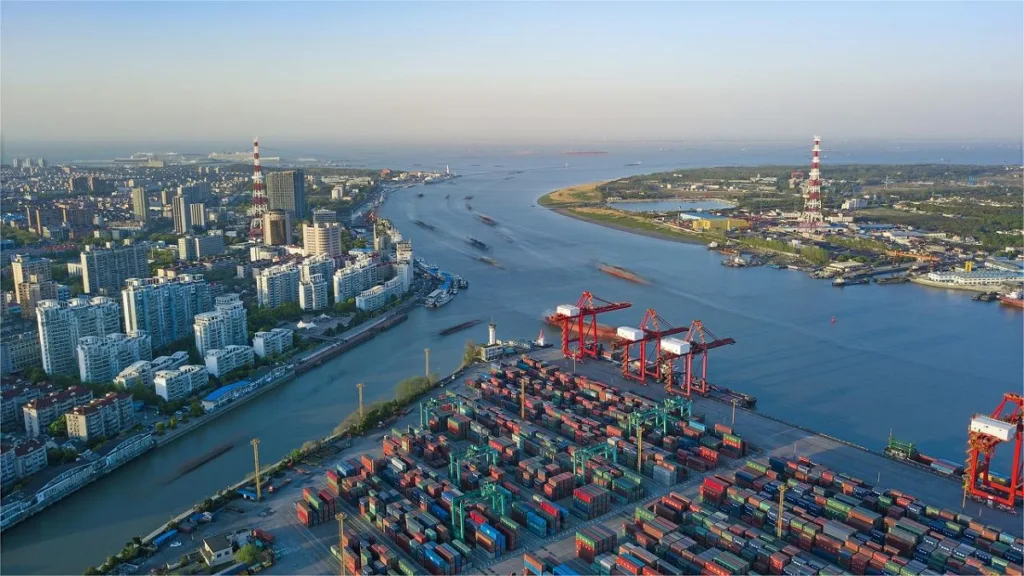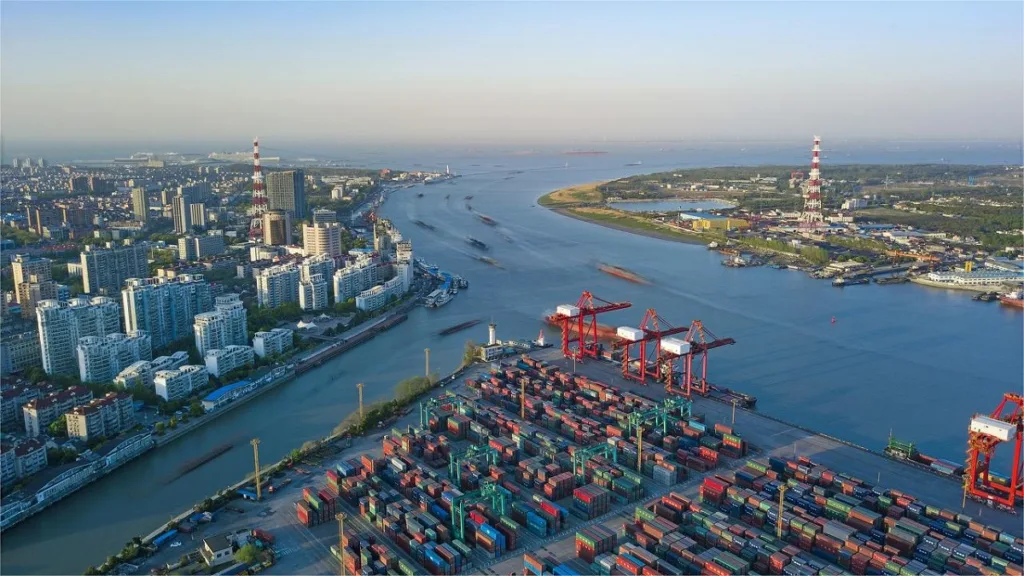Geschiedenis van de haven van Shanghai


Shanghai Port (上海港), situated in Shanghai, China, at the mouth of the Yangtze River, is one of the country’s most vital ports. It serves as a crucial link between China’s north and south coasts and the global oceans, while also connecting the Yangtze River basin and the inland waterways of Jiangsu, Zhejiang, and Anhui provinces. This strategic location endows Shanghai Port with significant economic value and strategic importance.
The history of Shanghai Port can be traced back to the early years of the Sui Dynasty (589-604 AD), when Huating Town was established, marking the initial formation of a river port in the Shanghai area. By the Song Dynasty, the port of Shanghai gradually shifted towards the sea, and during the Ming Dynasty, a new channel was established on the Huangpu River, enabling Shanghai Port to control the junction of river and sea, securing a favorable position for river-sea transshipment. During the Kangxi reign of the Qing Dynasty, Shanghai Port became one of the four major ports and later became the center of sand transport by boats during the Qianlong reign, earning it the title of “hometown of sand boats.”
However, it was in modern times that Shanghai Port truly began to flourish. In 1842, with the signing of the Treaty of Nanjing between China and Britain, Shanghai was opened as a treaty port for foreign merchant ships, providing an opportunity for the development of the port area. Subsequently, the Shanghai Port area gradually expanded, and port facilities were continuously improved.
In the mid to late 19th century, Shanghai Port underwent rapid modernization. In 1862, the construction of the Pudong New Port began, becoming the first modern large-scale port in Shanghai. Following this, the port area of Shanghai continued to expand, including the construction of the Bund Wharf, new ship locks, and other facilities. Especially in the early 20th century, under the guidance and investment of foreign concessions, the scale and facilities of Shanghai Port were further expanded.
However, the development of Shanghai Port has not been without setbacks. Due to China’s civil war and the influence of external political and economic situations, Shanghai Port experienced a period of stagnation. Nevertheless, with the establishment of the People’s Republic of China in 1949, the Shanghai municipal government gradually restored and developed the functions of the port.
Entering the era of reform and opening up, especially after China implemented the policy of reform and opening up in 1978, Shanghai Port experienced another period of vigorous development. Port facilities were continuously upgraded and expanded to meet the growing demand for international trade. Meanwhile, as China’s economy rapidly developed and its degree of openness deepened, Shanghai Port gradually became one of the busiest ports in the world.
In recent years, Shanghai Port has achieved remarkable accomplishments. For example, on January 1, 2022, the container throughput of Shanghai Port surpassed 47 million TEUs, firmly securing its position as the world’s largest container port for twelve consecutive years. Furthermore, Shanghai Port continues to explore a green and low-carbon development path, such as receiving green methanol fuel cargo, marking the basic formation of the green methanol fuel “storage, transportation, and supply” chain at Shanghai Port.